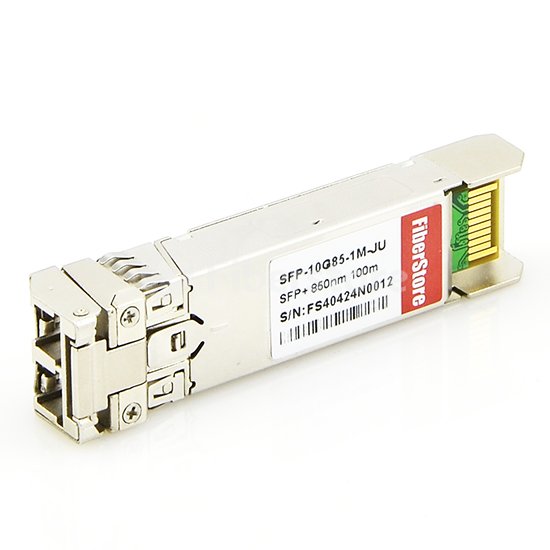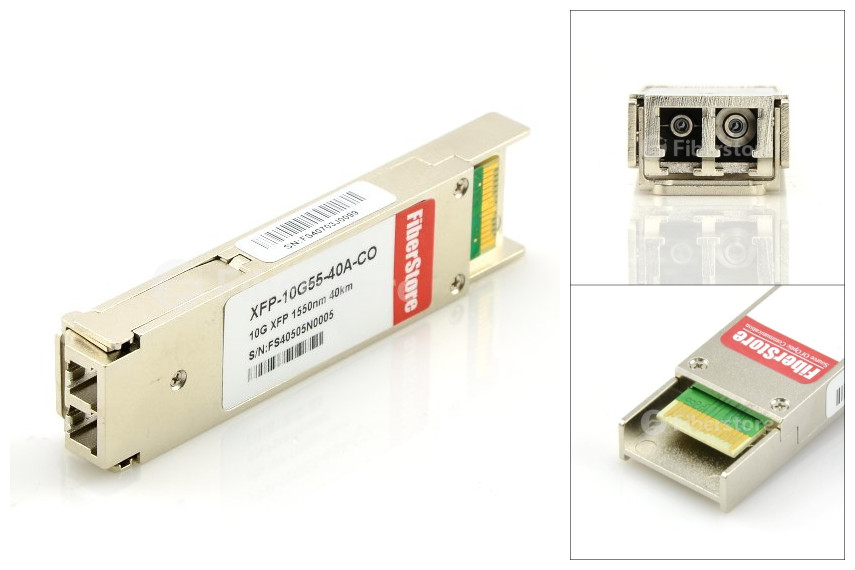SFP+ vs XFP
SFP+ and XFP are two terms for a type of transceiver that is plugged into a special port on a switch or other network device to convert the port to a copper or fiber interface. They are used in the field of telecommunication and data communication. Generally speaking, both of them are 10G fiber optical modules and can connect with other type of 10G modules. What's the difference between SFP+ and XFP? And what's the connection?
SFP+, the enhanced small form-factor pluggable, is an enhanced version of the SFP that supports data rates up to 16Gbit/s. SFP+ is a hot-swappable and protocol-independent module. SFP+ supports 8Gbit/s Fibre Channel, 10 Gigabit Ethernet and Optical Transport Network (OTN) standard OTU2. It is a popular industry format supported by many network component vendors. Although the SFP+ standard does not include mention of 16G Fibre Channel it can be used at this speed. Consideration has to be given to whether the module is linear or limiting. Linear SFP+ modules are most appropriate for 10GBASE-LRM; otherwise, limiting modules are preferred. SFP+ also introduces direct attach for connecting two SFP+ ports without dedicated transceivers. The image below shows a Juniper EX-SFP-10GE-USR 10GbE SFP+ transceiver.

XFP, 10 Gigabit small form factor pluggable, is a standard for transceivers for high-speed computer network and telecommunication links that use optical fiber. It was defined by an industry group in 2002, along with its interface to other electrical components, which is called XFI. XFP is also a hot-swappable and protocol-independent module. It typically operates at near-infrared wavelengths (colors) of 850nm, 1310nm or 1550nm. And it can operate over a single wavelength or use dense wavelength-division multiplexing techniques. XFP modules use an LC fiber connector type to achieve higher density. Principal applications include 10 Gigabit Ethernet, 10Gbit/s Fibre Channel, synchronous optical networking (SONET) at OC-192 rates, synchronous optical networking STM-64, 10Gbit/s OTN OTU2, and parallel optics links. With XFP you will surely experience a fast transmission of data in your computer network including your telecommunication links. The image below shows a Cisco XFP-10GER-192IR+ 10GBASE-ER XFP transceiver.

- 1.The size of SFP+ is smaller than XFP. The smaller SFP+ transfer the modulation functions, serial/deserializer, MAC, clock and data recovery (CDR) and EDC functions from the module to the motherboard on the card. SFP+ modules leave more circuitry to be implemented on the host board instead of inside the module.
- 2.XFP is based on the standard of XFP MSA; SFP+ is compliant with the protocol of IEEE802.3ae, SFF-8431, SFF-8432.
- 3.SFP+ is a more compact factor package than compared to that of XFP.
- 4.The cost of SFP+ is less than that to the XFP.
- 1.Both of them are 10G fiber optical modules, share the same features with other 10G transceivers and can connect with other type of 10G modules.
- 2.SFP+ now has replaced the XFP and becomes the main stream of 10G transceivers markets.
- 3.SFP+ and XFP are compact transceivers which function as modular connectors.
- 4.Available for copper (RJ-45) and for all common fiber modes, wavelengths and data rates, SFP+ and XFP allow network operators to connect different interface types to the same network equipment, via an SFP+/XFP port.
The fiber optic transceivers, as the core of optoelectronic device in the WAN, MAN or LAN application, have also developed various types along with the increasing in complexity. The cost of cable upgrades is greatly reduced, preserving the investment in costly networking equipment, for the price of a relatively inexpensive SFP+ or XFP. More and more network equipment is being designed with SFP+/XFP ports, to take advantage of this flexibility, and to take the uncertainty and guesswork out of expensive equipment purchases.

